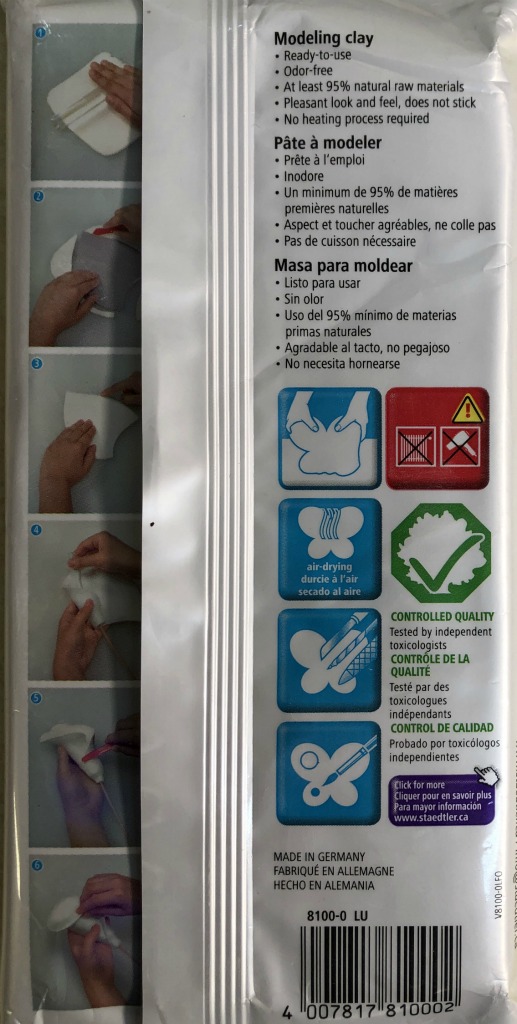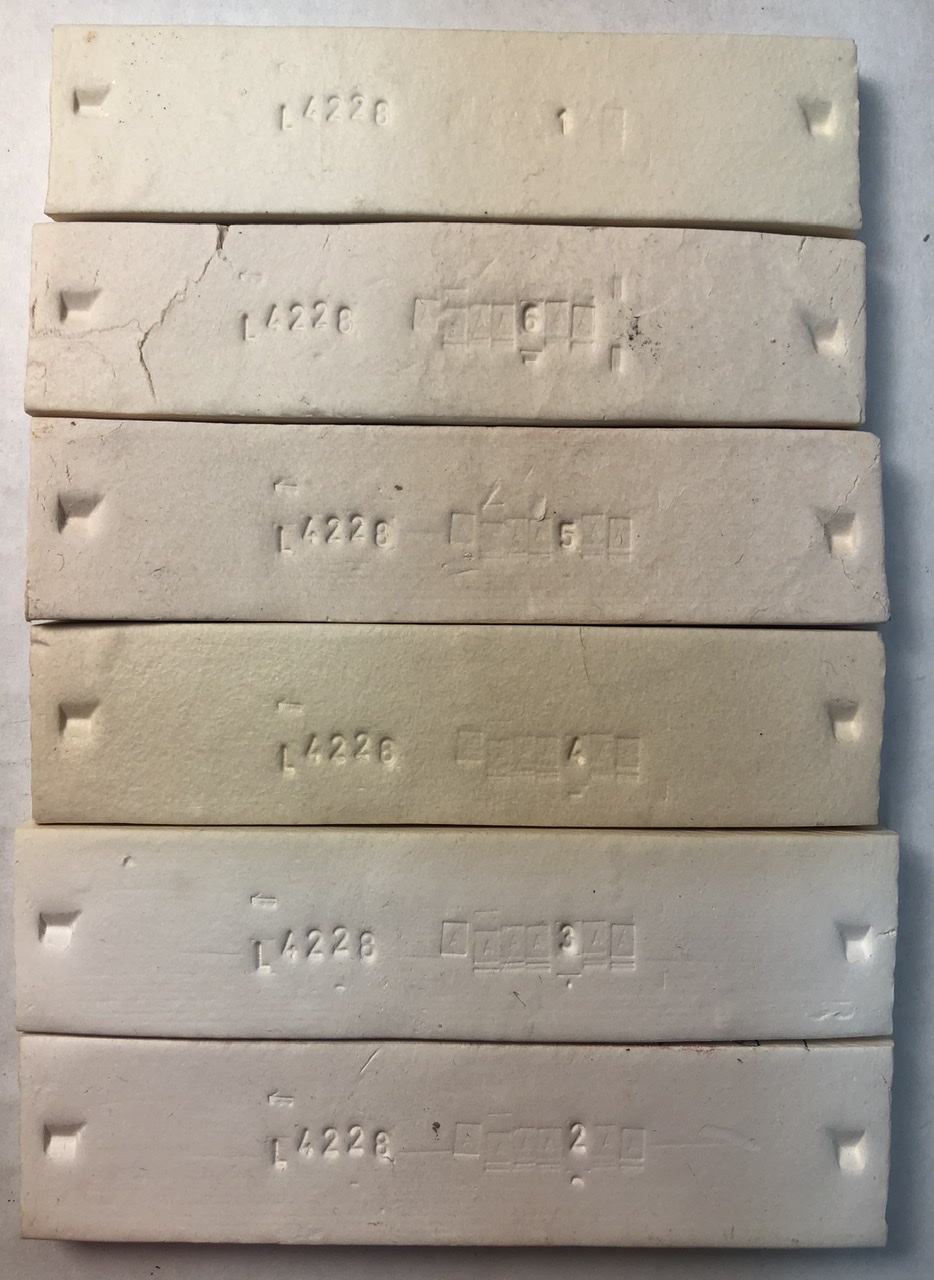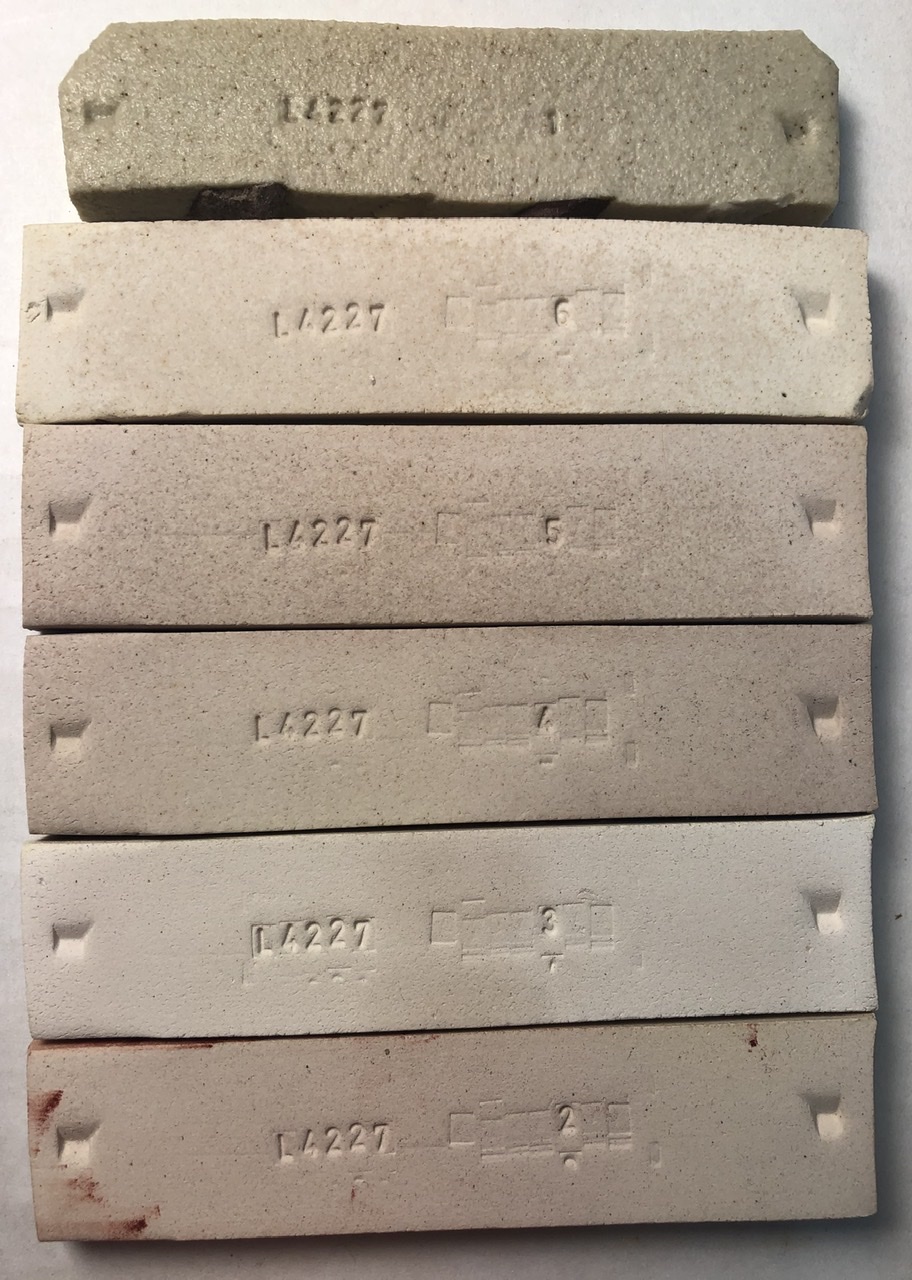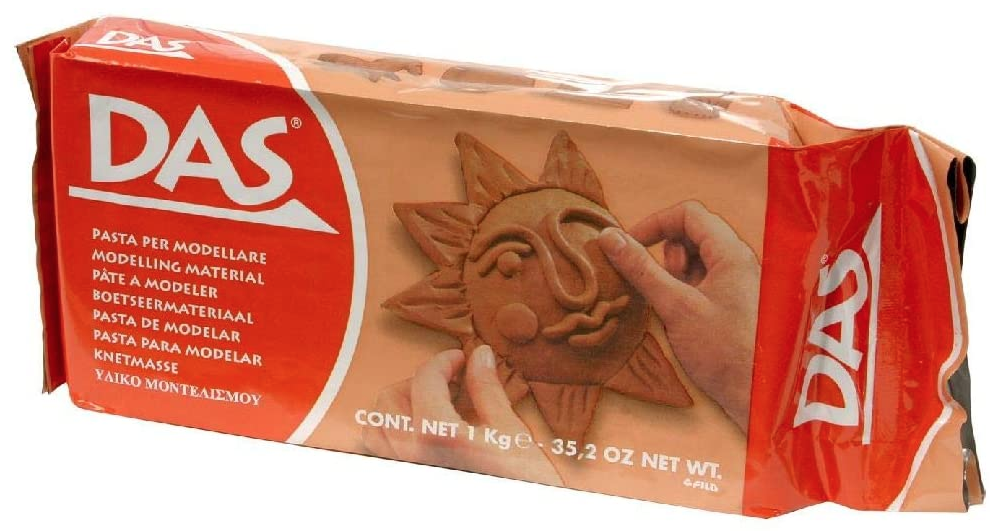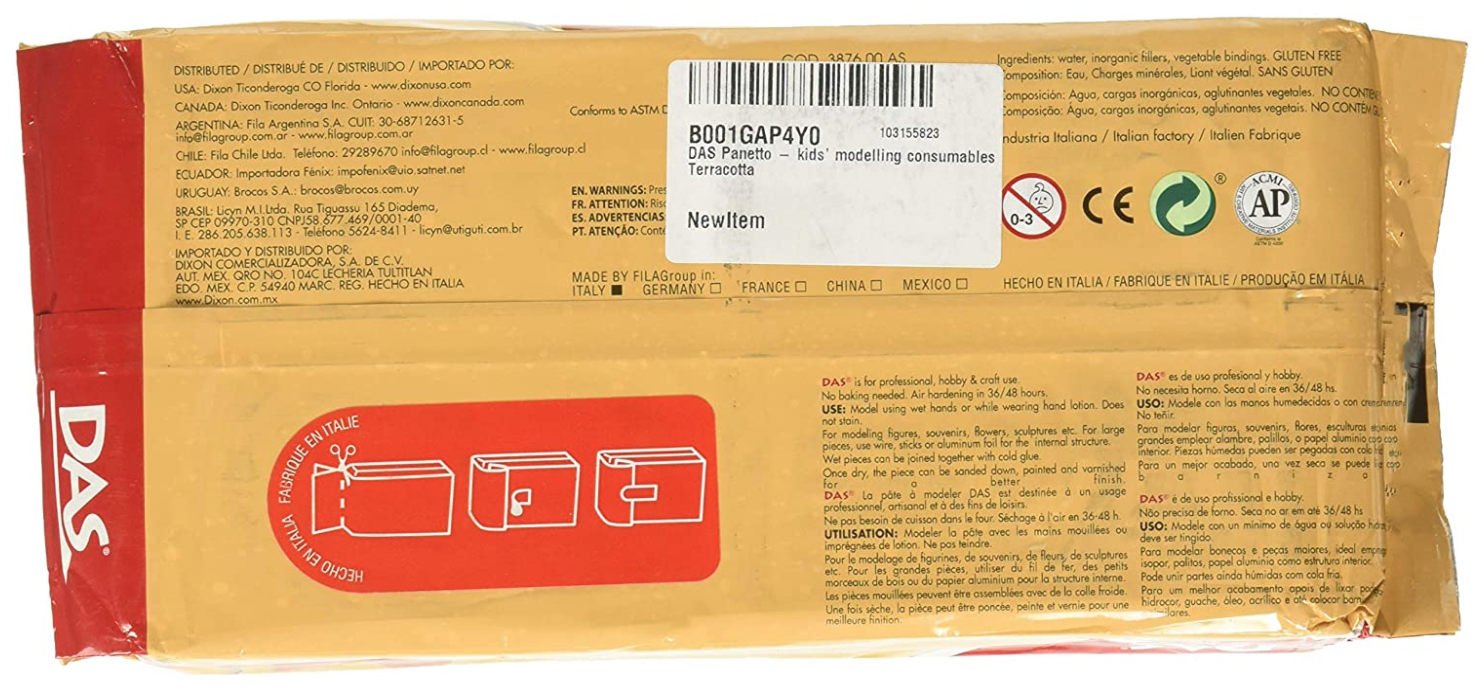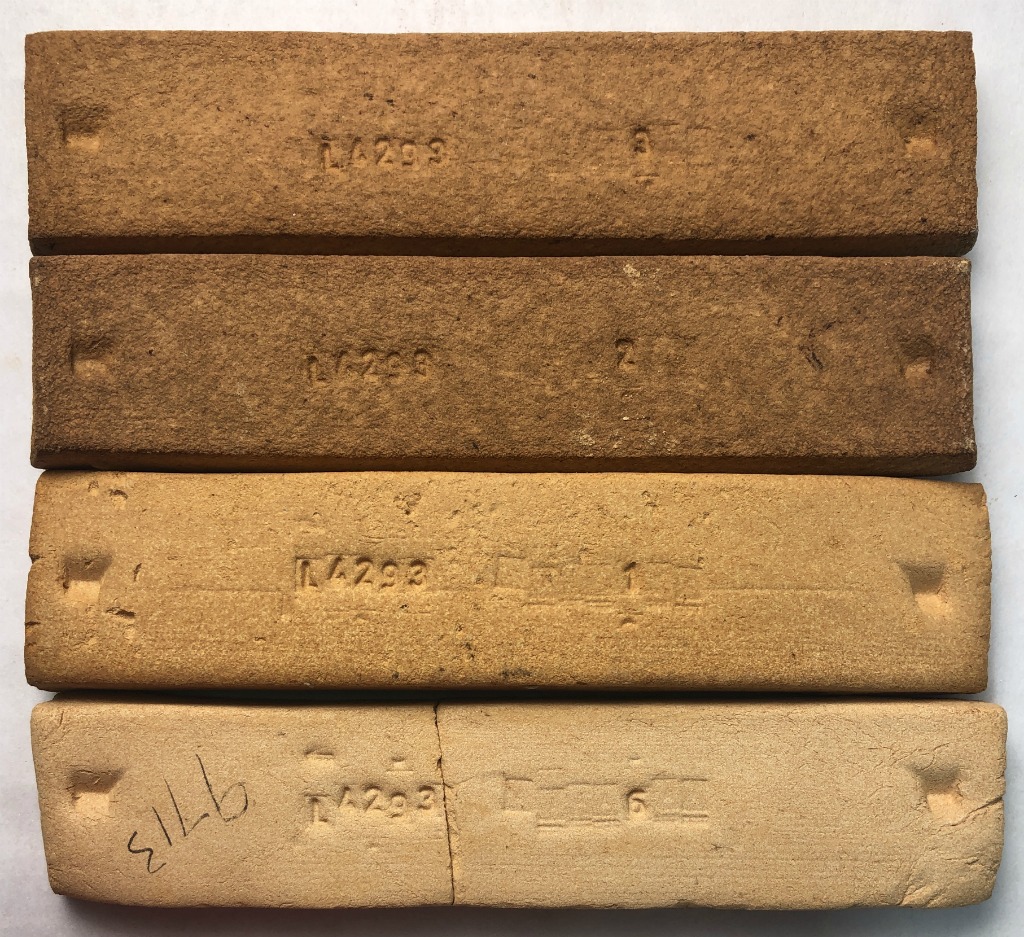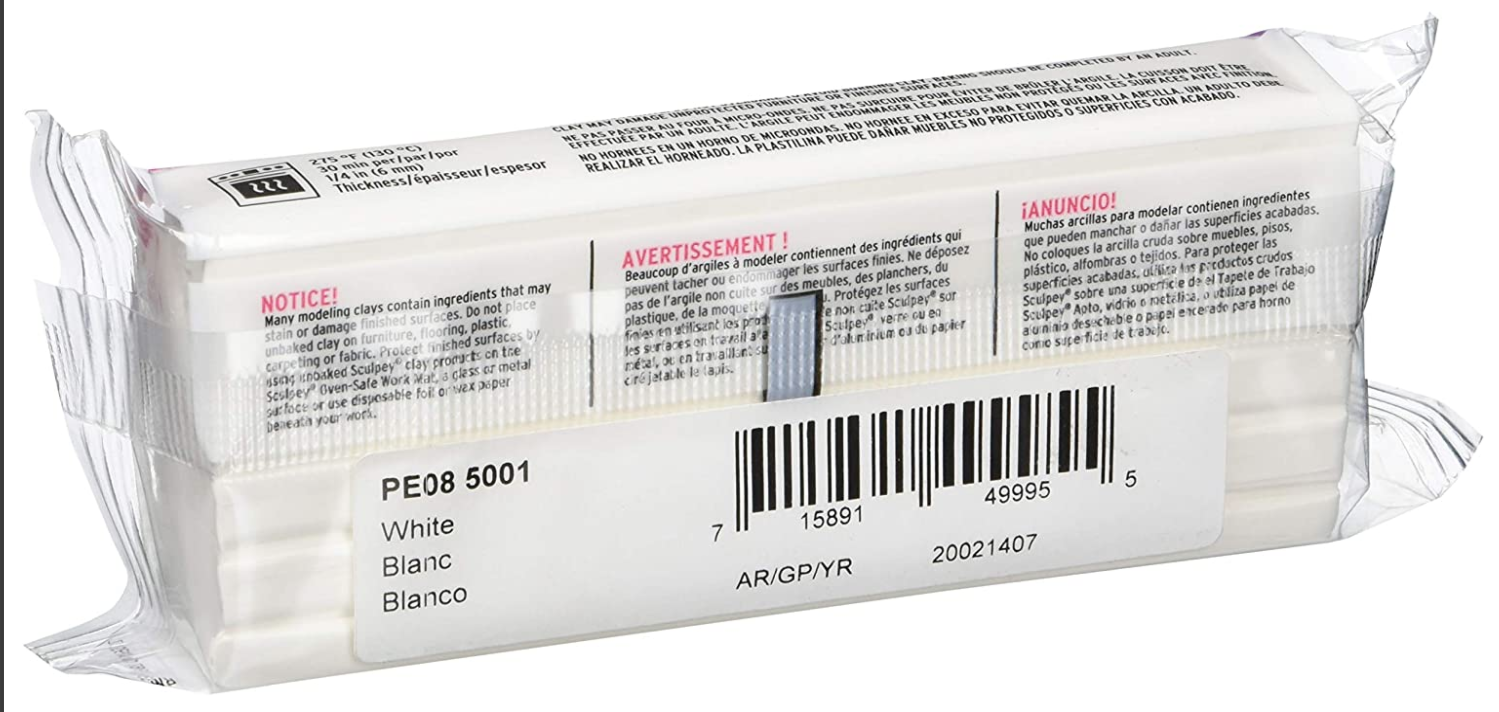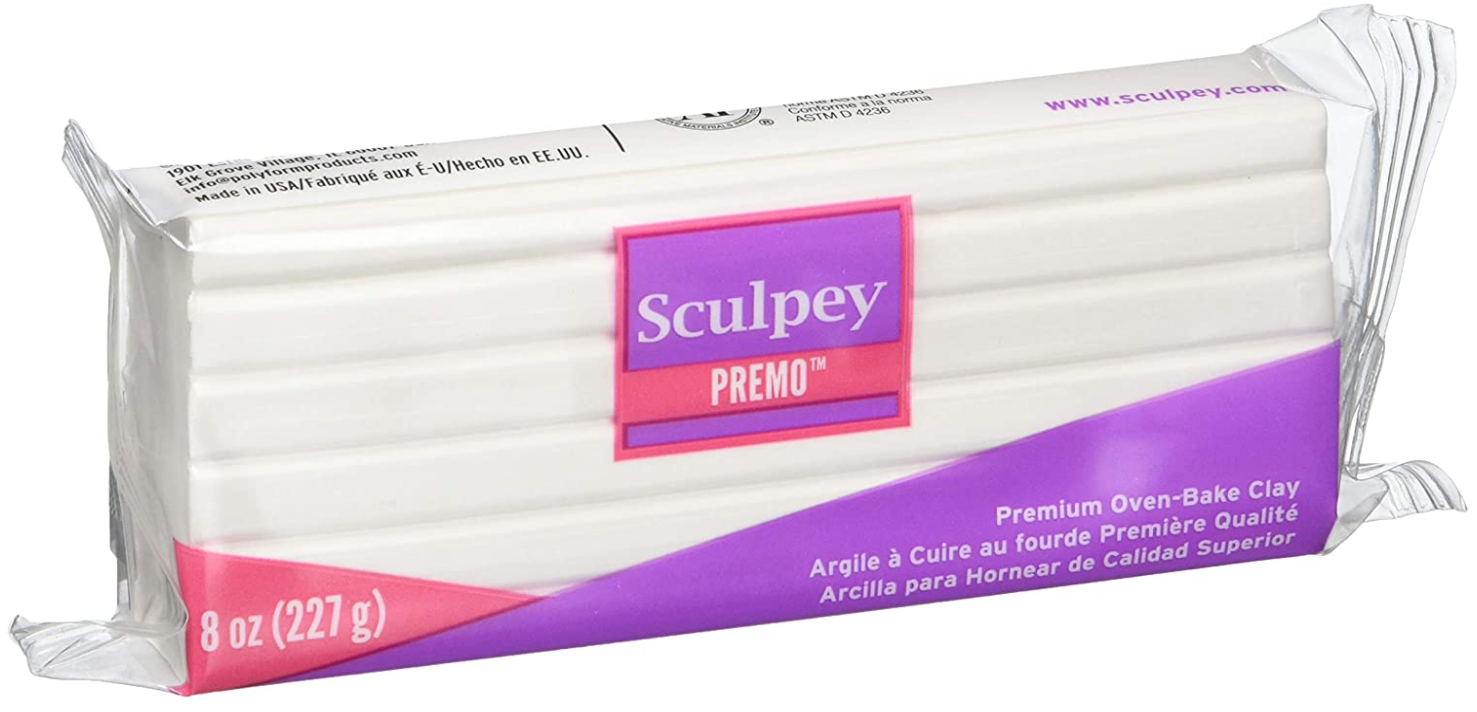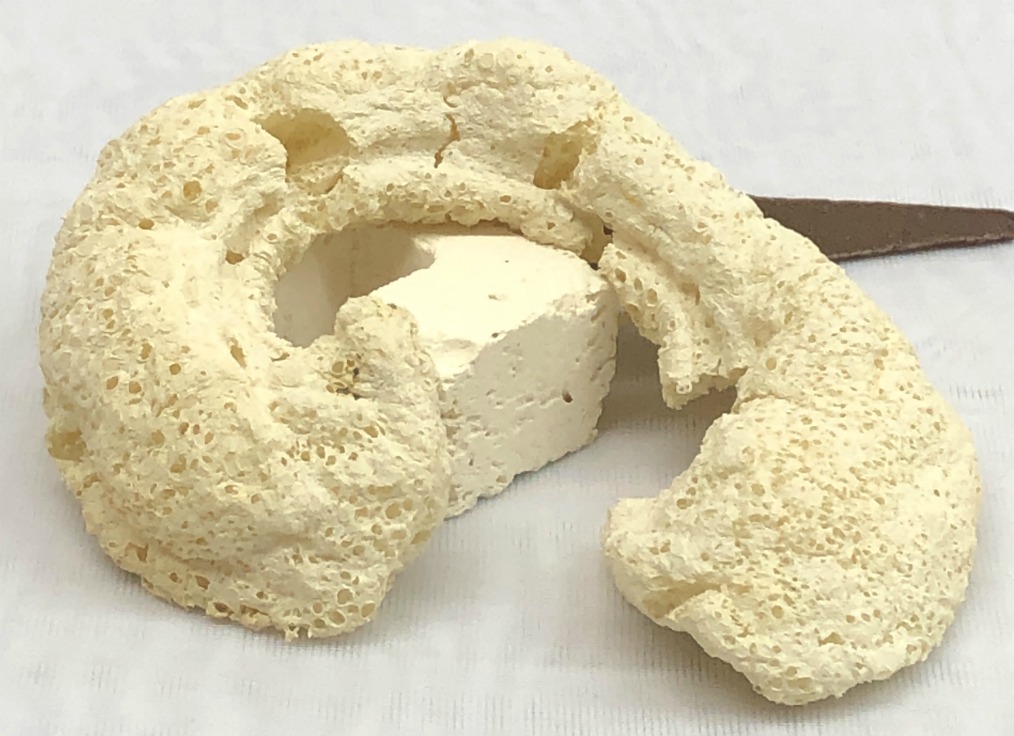Project Name
Self Hardening Clay
Project Codenumber
UnAssigned
Notes
Self hardening (or air hardening) clays sold commercially are radically different, some are not at all what you might expect. One seems to contain no clay! We tested a number of different products (most of which we bought at Michaels or on Amazon). Here are the results. It seem the DAS product is the most practical.
Some of the products are marketed in packages containing many colors. Since some of these dry very fast once the package is opened these might not be a good choice, it seems better to get a more economical one-colour material and just paint pieces after drying.
On the matter of making your own polymer clay, A. Falahi, a Polymer expert we hired on Upwork, said:
"There are a number of formulas for making the quality modeling dough comprising:
• Polar polymeric resin, water, a gellant, and a filler that provides a dough resistant to flaking, cracking, and crumbling. The polymeric resin is gelled, thereby providing a water-based resin system that is not sticky yet very ductile.
• A sculpting/modeling medium comprised of a nontoxic premixed loose ground cellulose material; a vegetable adhesive; and water;
• A modeling composition comprising: a solid wax; oil; fillers; polymer resin; and microspheres, wherein the microspheres include spherical polymer shells encapsulating a gas."
Fimo Clay
|
Code # L4228 |
Notes
Contains a small amount of fibre so it is easier to cut while working with it. Difficult to trim edges in the dry state, this sets quite hard (not as hard as L4227, but as good as Mont Marte).
Dries very quickly, probably the fastest of all of them, it really needs some sort of additive to slow down drying. This stiffened too much during storage since last use (although I did have it ziplocked).
This is likely a clay/dolomite or clay/calcium carbonate mix, it fires very white. It cone 04 this is still soft (confirming our recipe suspicions).
Pictures
Testdata
SHAB - Shrinkage/Absorption
| DLEN | FLEN | FWT | BWT | CONE | DSHR | FSHR | ABS | |
| 3 | 95.8 | 85.3 | 26.95 | 29.49 | 8.8 | 4.2% | 11.0% | 9.4% |
| 2 | 95.96 | 85.83 | 27.56 | 30.47 | 7.8 | 4.0% | 10.6% | 10.6% |
| 1 | 96.34 | 86.25 | 27.09 | 30.18 | 7.0 | 3.7% | 10.5% | 11.4% |
| 6 | 96.18 | 88.33 | 29.27 | 33.63 | 6.0 | 3.8% | 8.2% | 14.9% |
| 5 | 96.36 | 89.66 | 29.13 | 35.22 | 5.0 | 3.6% | 7.0% | 20.9% |
| 4 | 96.06 | 90.42 | 27.38 | 34.13 | 4.0 | 3.9% | 5.9% | 24.7% |
LDW - LOI/Density/Water Content
| WWGT | DWGT | FWGT | H2O | LOI | DENS | |
| 1 | 17.94 | 12.27 | 10.25 | 31.6% | 16.5% | |
| 2 | 18.74 | 13.59 | 11.31 | 27.5% | 16.8% |
XML (to paste into Insight)
Born: 2019-09-24, Modified: 2022-02-04 13:26:38
Plus Clay
|
Code # L4227 |
Notes
This is the most like a regular clay. No added fibre, so it has nice workability. Light tan color.
It dries harder than the Fimo (it was very hard to trim dried test bar corners with a knife).
At cone 04 the bar looks like a white ball clay. But higher temperatures it behaves like a talc/ball clay mix.
I tested this twice. The shrinkage numbers here are from the second time, after the clay had stiffened somewhat on the shelf. Even stiffened, it had a 7% dry shrinkage! That is a lot for this type of material (if pieces have varying thicknesses in the cross-section and are not dried evenly they could crack).
Pictures
Testdata
SHAB - Shrinkage/Absorption
| DLEN | FLEN | FWT | BWT | CONE | DSHR | FSHR | ABS | |
| 1 | 93.16 | 84.01 | MELTING | 7.0 | 6.8% | 9.8% | ||
| 6 | 93.01 | 90.47 | 30.36 | 37.67 | 6.0 | 7.0% | 2.7% | 24.1% |
| 5 | 92.83 | 90.54 | 31.98 | 39.67 | 5.0 | 7.2% | 2.5% | 24.0% |
| 4 | 93.02 | 91.13 | 31.6 | 39.56 | 4.0 | 7.0% | 2.0% | 25.2% |
| 3 | 93.03 | 91.42 | 31.33 | 38.03 | 3.0 | 7.0% | 1.7% | 21.4% |
| 2 | 92.87 | 90.78 | 32.34 | 38.48 | 2.0 | 7.1% | 2.3% | 19.0% |
LDW - LOI/Density/Water Content
| WWGT | DWGT | FWGT | H2O | LOI | DENS | |
| 1 | 26.86 | 20.55 | 15.57 | 23.5% | 24.2% | |
| 2 | 28.41 | 22.7 | 16.95 | 20.1% | 25.3% |
XML (to paste into Insight)
Born: 2019-09-24, Modified: 2022-02-04 13:33:26
DAS Air Drying Clay
|
Code # L4293 |
Notes
Bought from Amazon.ca. Package says it does not stain (it is red, but fairly easy to wash off). Made in Italy and sold through the Spanish-speaking world. The package size is bigger than the others tested (much bigger than some). This has some issues (described below) but it appears to be the most practical of all tested.
Smells less like polymer than expected.
Much softer than others, just stiff enough to not be too slippery. Not obvious how pieces would be joined, feels too oily for that.
Dried bars have fibrous edges and they curled while drying (even though this has a really low drying shrinkage, that is strange).
Dries pretty hard, but not as hard as L4227.
Cone 2 looks like fly ash (the recipe is very refractory, all the way to cone 6). Fired pieces are very light, so it appears the recipe is fly ash and a colorant mixed with organics and a plasticizer that burn away in the firing.
Pictures
URLs
Testdata
SHAB - Shrinkage/Absorption
| DLEN | FLEN | FWT | BWT | CONE | RDIA | DSHR | FSHR | ABS | |
| 3 | 97.13 | 94.63 | 19.51 | 31.91 | 8.0 | 2.9% | 2.6% | 63.6% | |
| 1 | 96.94 | 96.26 | 19.17 | 32.63 | 7.0 | 3.1% | 0.7% | 70.2% | |
| 6 | 97.65 | 97.13 | 6.0 | 2.3% | 0.5% | ||||
| 2 | 97.06 | 95.92 | 23.15 | 2.0 | 2.9% | 1.2% | |||
| 4 | 96.91 | 79.9 | 19.15 | 19.6 | 9.0 | 3.1% | 17.6% | 2.3% | |
| 5 | 97.58 | 2.4% |
LDW - LOI/Density/Water Content
| WWGT | DWGT | FWGT | H2O | LOI | DENS | |
| 3 | 22.08 | 14.99 | 10.77 | 32.1% | 28.2% |
XML (to paste into Insight)
Born: 2020-07-27, Modified: 2022-02-04 13:47:12
Sculpey PE08 Oven Bake Clay
|
Code # L4294 |
Notes
Sculpey Premo. Pure white. Does not make hands or surfaces dirty (yet the package says it stains).
Too stiff to work with. No fibre. Feels like some sort of plastic. Firing it in a kiln leaves a lightweight skeleton, perhaps of a bentonite used to give plasticity.
But there is a big problem: It does not dry hard, it feels like flexible rubber.
Pictures
Testdata
SHAB - Shrinkage/Absorption
| DLEN | DSHR | FSHR | ABS | |
| 1 | 98.38 | 1.6% | ||
| 2 | 98.02 | 2.0% | ||
| 3 | 99.15 | 0.8% | ||
| 4 | 97.9 | 2.1% | ||
| 5 | 97.56 | 2.4% |
XML (to paste into Insight)
Born: 2020-07-27, Modified: 2022-02-04 13:42:44
Monte Marte Air Hardening Clay
|
Code # L4292 |
Notes
From Amazon. Designed in Australia, made in China. This was from batch no. 81227. Grey White.
Hard to wash off hands, dries on hands quickly. Left surfaces (e.g. batt, wood) with a hard layer that had to be scraped off with a metal trowel.
Cannot wedge or knead, it is too stiff. Smells like carpenter glue (a tip that it contains plenty of polymer). Very difficult to cut because it contains a lot of paper fiber, much more than the others tested.
Dries very hard (even harder than L4227).
Fires like a pure kaolin so that means it is made of traditional ceramic materials with fiber and polymer added.
Pictures
L4292 Monte Marte Air Hardening Clay
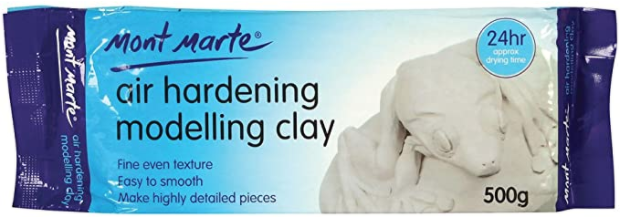
L4292 Monte Marte Air Hardening Clay
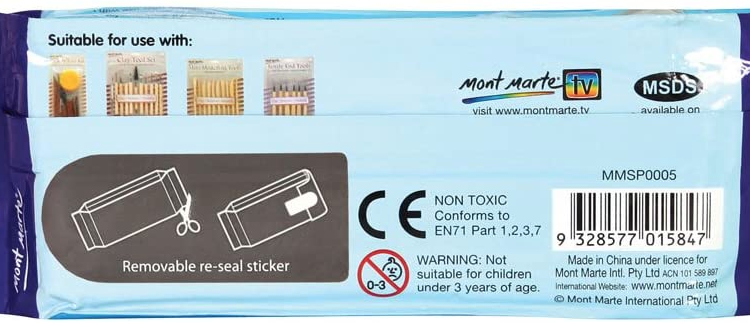
L4292 Monte Marte Air Hardening Clay fired bars
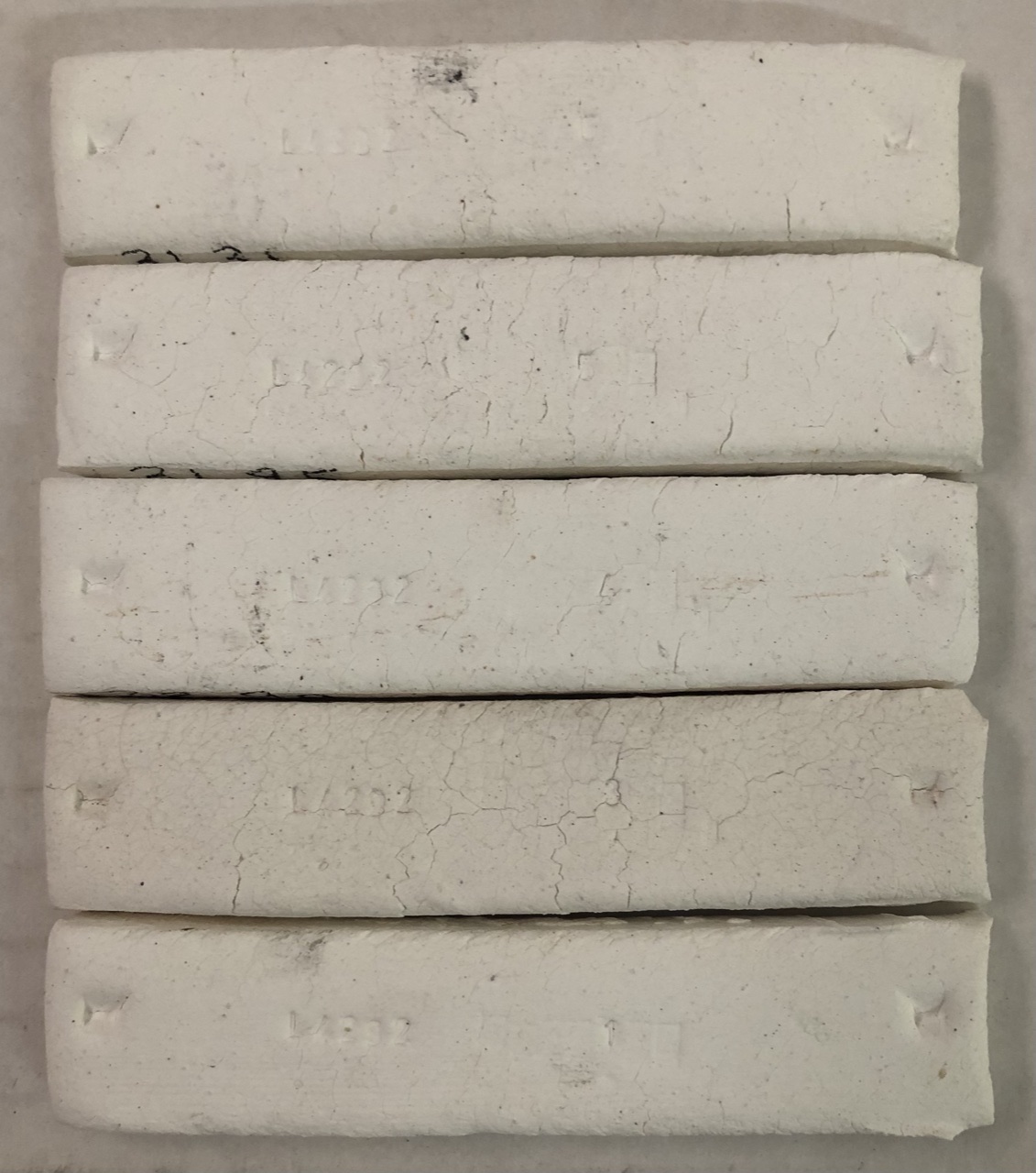
URLs
Amazon URL for Monte Marte clay
Testdata
SHAB - Shrinkage/Absorption
| DLEN | FLEN | FWT | BWT | CONE | DSHR | FSHR | ABS | |
| 6 | 94.76 | 84.56 | 27.71 | 31.31 | 10.5R | 5.2% | 10.8% | 13.0% |
| 4 | 94.91 | 86.09 | 28.33 | 32.9 | 7.8 | 5.1% | 9.3% | 16.1% |
| 1 | 94.88 | 86.04 | 25.83 | 30.14 | 7.0 | 5.1% | 9.3% | 16.7% |
| 5 | 94.81 | 85.92 | 27.72 | 31.95 | 5.0 | 5.2% | 9.4% | 15.3% |
| 3 | 95.1 | 86.56 | 28.25 | 32.26 | 3.0 | 4.9% | 9.0% | 14.2% |
| 2 | 94.81 | 86.34 | 27.12 | 2.0 | 5.2% | 8.9% |
LDW - LOI/Density/Water Content
| WWGT | DWGT | FWGT | H2O | LOI | DENS | |
| 1 | 27.39 | 19.6 | 15.35 | 28.4% | 21.7% |
XML (to paste into Insight)
Born: 2020-07-27, Modified: 2022-02-04 13:20:40

